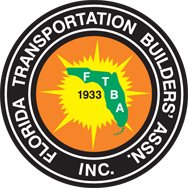Benefits of Automation
Safety
The safety benefits of automated vehicles are paramount. Automated vehicles’ potential to save lives and reduce injuries is rooted in one critical and tragic fact: 94 percent of serious crashes are due to human error. Automated vehicles have the potential to remove human error from the crash equation, which will help protect drivers and passengers, as well as bicyclists and pedestrians. When you consider more than 35,092 people died in motor vehicle-related crashes in the U.S. in 2015, you begin to grasp the lifesaving benefits of driver assistance technologies.
Economic and Societal Benefits
Automated vehicles could deliver additional economic and additional societal benefits. A NHTSA study showed motor vehicle crashes in 2010 cost $242 billion in economic activity, including $57.6 billion in lost workplace productivity, and $594 billion due to loss of life and decreased quality of life due to injuries. Eliminating the vast majority of motor vehicle crashes could erase these costs.
Efficiency and Convenience
Roads filled with automated vehicles could also cooperate to smooth traffic flow and reduce traffic congestion. Americans spent an estimated 6.9 billion hours in traffic delays in 2014, cutting into time at work or with family, increasing fuel costs and vehicle emission. With automated vehicles, the time and money spent commuting could be put to better use. A recent study stated that automated vehicles could free up as much as 50 minutes each day that had previously been dedicated to driving.
Mobility
While its full societal benefits are difficult to project, the trans-formative potential of automated vehicles and their driver assistance features can also be understood by reviewing U.S. demographics and the communities these technologies could help to support.
For example, automated vehicles may also provide new mobility options to millions more Americans. Today there are 49 million Americans over age 65 and 53 million people have some form of disability.
In many places across the country employment or independent living rests on the ability to drive. Automated vehicles could extend that kind of freedom to millions more. One study suggests that automated vehicles could create new employment opportunities for approximately 2 million people with disabilities.













